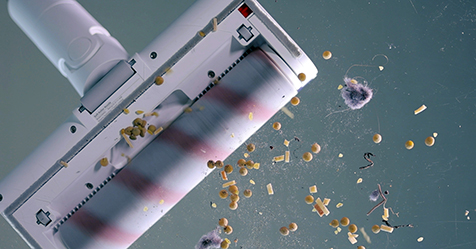When cleaning environments like a dentist’s office or small doctor’s office, there are things a building service contractor (BSC) should keep in mind. Because these medical facilities deals with peoples’ health and well-being, you should not consider them “spray-and-wipe” environments. Your first focus regarding service should be to limit cross-contamination. The next focus should be to properly estimate the time you’ll need to do so, especially because so much of the cleaning industry is time-sensitive.
Take the Time to Do the Job Right
As professionals, we want things to look clean. “Clean” usually means we’re done and the customers happy. But before cleaning for appearance, it’s important to clean for health. Bacteria like Clostridium difficile (C. diff) can exist in many places, especially in a medical facility. It is important to build in time for cleaners to allow for proper dwell time to eliminate bacteria, and to consider cost of materials required to do the job properly. While interviewing a new customer, consider how much time it will take to do this job properly. Honest time budgeting will give you enough margin to do the job well and profitably.
Use the Proper Tools
Procuring proper tools and materials may cost a little more upfront. However, once your staff is trained and understands how to properly use all tools and equipment, their value becomes obvious. These materials and supplies will help you clean for health, provide better service, and ultimately become more profitable.
Be Aware of the Facility Type
What type of facility are you cleaning? Keep these factors in mind for the following medical facility types:
- Dentist Office
These offices generally are cleaner to start with based on the nature of dentists’ work.
- Medical Doctor
People usually visit the doctor because they’re not well. In these facilities, you will need to account for slower cleaning times in order to do a thorough job. As part of your service, will you be responsible for disposing of the “sharps bucket” or “red bags,” which have come in contact with blood or bodily fluids? Handling either of these will require special training and procedures. These will of course require more time for the cleaner and increased costs to the customer.
- Pediatrician
Sick children with runny noses tend to touch almost everything they can reach. In this office setting, your focus will likely be on surfaces and touchpoints 4 feet and lower. It’s common for toddlers to lean on and even chew coffee tables.
- Oncologist
Most commonly, adult clients visit oncologists. While these patients generally create less mess, due to their heightened sensitivity in these environments, it’s even more important to properly disinfect the areas you serve.
Do the Job
In order to do any of these jobs properly, you must equip cleaners with the right kind of disinfectants. Here, you want to procure hospital-grade solutions with broad spectrum kill rates.
Will you use a one- or two-step cleaner and disinfectant? One step will clean and disinfect, while a two step solution will require that you clean first and then disinfect.
Medical facilities of all kinds will vary slightly, but there are a number of surfaces that cleaners will be responsible for that are similar from facility to facility. Those include:
Exam rooms
Exam rooms commonly will include elements such as an exam table, chairs, a sink with countertop, and cabinets.
Let’s address how to clean these surfaces and touchpoints.
Exam table and chairs
- Raise the table in order to clean underneath
- Pull back any liner paper in order to apply disinfectant
- Use the appropriate dwell time for cleaners and disinfectants.
Sink with countertop
- Similar to the exam table, these surfaces often see a lot of use In the event you find used surgical shears in the sink, we recommend leaving a note explaining why you didn’t clean the sink.
Cabinets
- Pay special attention to drawer handles and edges that are touched frequently. I recommend you use of a broad spectrum cleaner and antibacterial cleaner on cabinets, and follow the materials’ directions for best results.
The floor
- Assuming you properly vacuum floors first, flat mops are by far superior in these environments. Considering everything that might fall to the floor we recommend using a cleaner and disinfectant. Our favorite flat mops also use microfiber, and in this case, use one microfiber per exam room floor. Flat mops are advantageous in these environments due to their reach in small areas and under cabinets and chairs.
One additional piece to consider is that the materials you use to clean and disinfect tend to be more aggressive, which means they will dull the floors faster than standard cleaning material. You may want to consider speaking with your customer about a floor maintenance program, because most customers associate a clean, shiny floor with a clean environment.



